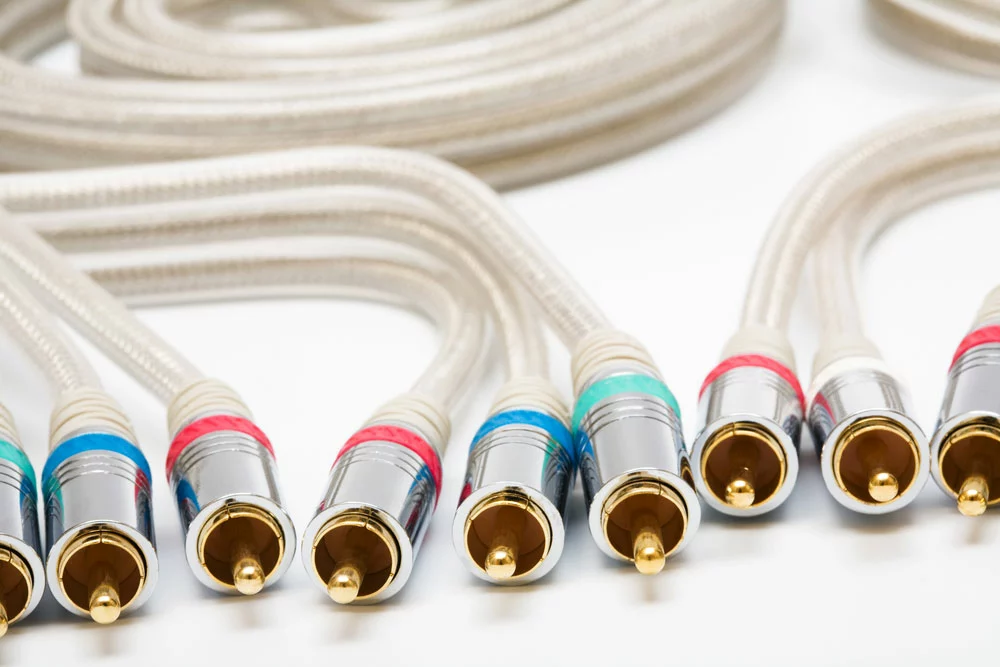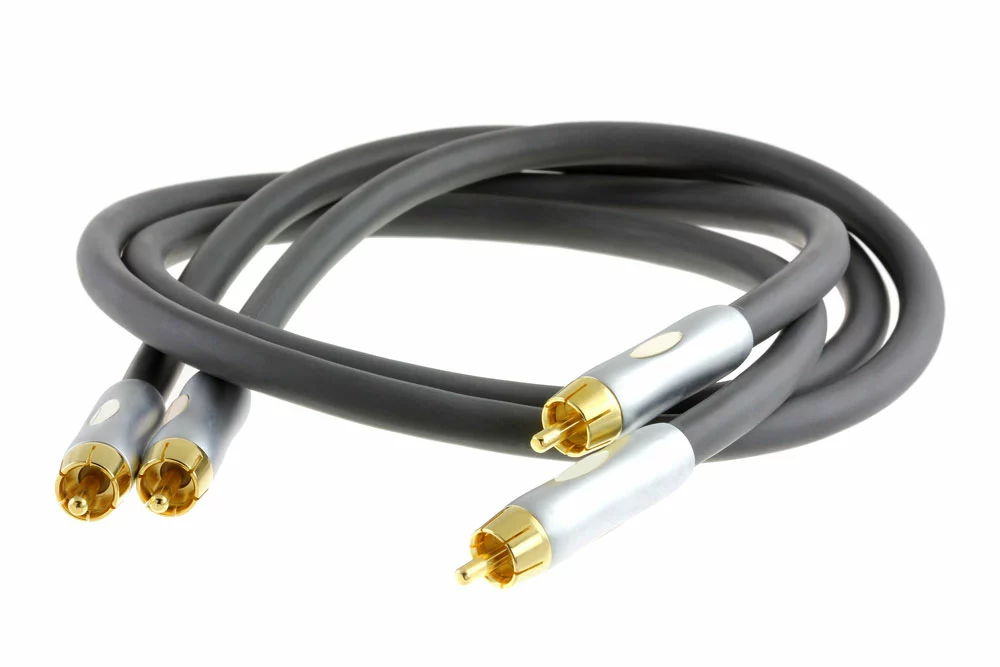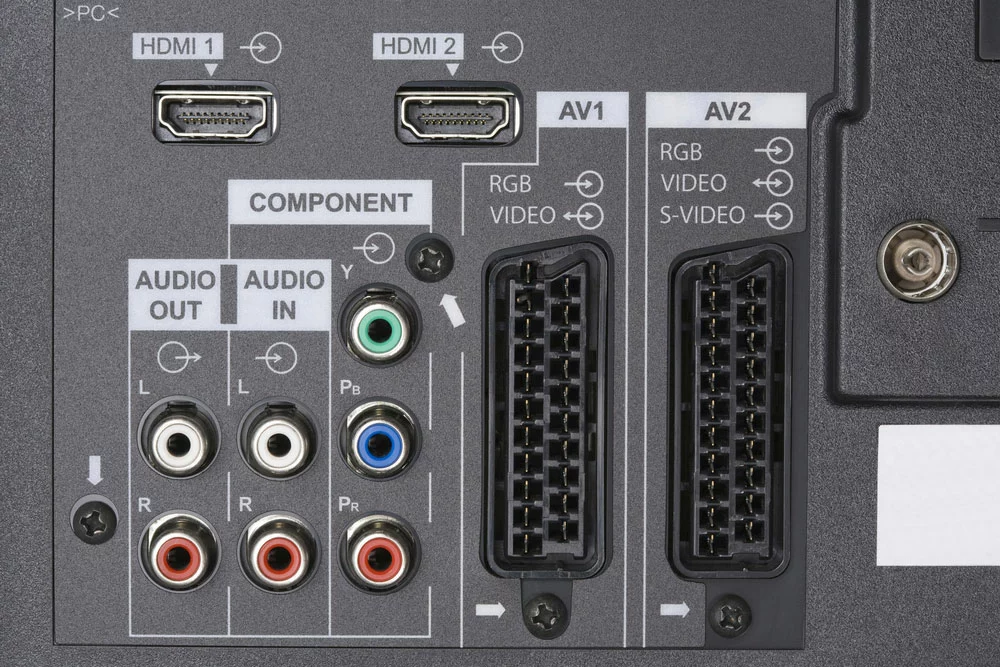Home theaters and stereo systems are standard in our houses, which can change your videos’ sound quality. However, it happens if you use proper cables. This article will highlight the composite audio cable.
Table of Contents
- Composite video and RCA understanding
- Composite video cable
- RCA audio cable
- Component cable vs. Composite cables: What’s the difference?
- Conclusion
Composite video and RCA understanding
Composite is a format for video encoding. It comprises analog video transmission having clocked frequency of 60-hertz composite video. RCA connectors can transmit the video through a copper wire. BNC connectors also work with the cable. In addition, you can use bare copper through banana or spade connectors.
So, composite and RCA are two different things; a video encoding standard and a physical hardware device. The encoding standard is composite, and its device is a composite cable. Most composite videos use RCA connectors to transmit over cables as they are cost-effective. Further, there is insignificant loss from the connector as the shield ground covers the signal wire.
When referring to a cable, an RCA/composite cable is a video/audio cable with yellow, red, and white connectors on both ends. You can connect a DVD player, VCR, gaming system, and other video and audio devices to your television. Here, the yellow one is for video, and the red/white ones are for audio (white and red for the left and right speaker, respectively). You can get these cables from 3 feet to 100 feet. However, as the cable length increases, there is some loss in signal quality.

Caption: component video and audio cable
Composite video cable
A composite video cable, also known as a yellow plug cable or RCA cable, helps transfer video signals through one connector and one cable. It fails to support high-definition content and progressive scan images. As the video passes through a single cable, it compresses heavily, resulting in the loss of resolution and picture clarity. Also, the cable undergoes radio frequency interference, further degrading the quality of the picture.
This concept is becoming obsolete because composite video cannot support HD signals. The component video takes the place of the composite as it delivers a clear picture even at high resolutions. The only application left for composite video is old video game systems, which do not support the component format. Thus, some modern HDTVs have at least one input for composite video so that you can plug in your old systems with your modern TV.
RCA audio cable
The Radio Corporation of America introduced the RCA connector in the 1940s. It can transfer unbalanced analog signal at -10dBV line level or phono when used in pairs. There are mainly two types of RCA connectors.
RCA (Stereo) cables
The RCA stereo cables are used for stereo audio connections as it transfers two channels of the stereo audio signal. It comprises low-cost materials having two unshielded cables with red and white RCA plugs. Apart from this, stereo mini-to-RCA cables have a 1/8-inch plug at one end and an RCA connection at the other. You can connect a portable audio player to an amplifier or receiver.
While choosing these cables, look for central copper conductors with twice or thrice shielding. Also, look for solid and gold-plated RCA connectors.
RCA (Multichannel) cables
As the name clears, this cable has multiple conductor strands (six or more) for transferring more than five full-range audio channels and up to two subwoofer channels. Some high-end blu-ray players use this to handle their digital-to-analog converter.
Look for double or triple shielding, central copper conductor, and RCA connectors while picking these cables.

Caption: RCA connector
Component cable vs. Composite cables: What’s the difference?
Also, people are often confused with component vs. composite cables. Let’s have a clear picture.
What is the component cable?
The three-headed cable you see in your DVD player is a component cable, and the DVDs show high-quality motion pictures due to these cables only.
At the end of the cable, three RCA connectors connect to your device. These are primarily red, green, and blue, and the colors help in properly connecting the plugs to their ports. Component cables transfer videos belonging to the multi-scan format category, which is named so that they transfer frequency rates and multiple lines.
The component video has three different types of signals:
- Scan: it indicates the start and the end of the video lines and frames.
- Luminance: it decides the motion picture’s brightness
- Chrominance: it determines the image colors.
The three different plugs in the component cable are for the chrominance part, and there are three different parts of the chrominance portion of the video signal. Three different colors mark the three parts, and they transmit the marked colors only.
The red plug transmits red color, blue transmits blue color, and the green combines the sync and luminance pulses. There is no transmission of green color as the TV, and other such players take only red, blue, and luminance information and extract the green parts based on this information.
The three different colored cables in the component cable are named:
- Green cable- Y cable
- Red cable- Pr cable
- Blue cable- Pb cable
The component video delivers a good-quality picture due to this separation of the chrominance part of the video. However, remember, component cable only transmits HD image resolution and does not transmit audio signals, and you will need a Coaxial or optical cable for audio signals.
What is the composite cable?
These cables are one of the first inventions that carry video signals from one device to another. Older TV sets that do not support HDMI cables use composite cables. These are single-headed yellow cables with one RCA jack which you can insert from any of the two ends into your TV set. In some cables, there is an AV out marking on one end. If that is the case, you should use this end to insert it into your TV.
The composite cable sends composite video signals from a video camera or DVD to an output device like a TV. Sometimes, these cables are referred to as Composite video baseband signals, and you can commonly refer to it as SD video, as it only sends standard definitions signals.
Also, you will need another cable for audio signals.
Component Cable Vs. Composite Cable: Connectors
Composite video cables have a single connector on both ends, and this single connector transfers analog video signals. On the contrary, component cables have three connector heads where each head transmit different component of analog video signals. Modern devices use this technology to get refined and excellent picture quality.
Component Cable Vs. Composite Cable: Image Transmission
Composite cables comprise a single cable; thus, all images get heavily compressed. On the other hand, as described earlier, the three wires in the component cable process the information better. As a result, you get more precise, smoother, and vibrant images.
Composite cables can carry an average resolution of only 480i, while an advanced version can go up to 576i. On the contrary, component cables are an advanced version of composite ones and thus can carry resolutions up to 1080i or even higher than that. The real resolution power of the component cable depends on the device transmitting the video signals, and if it can handle higher resolution, the component cable can go further high.

Caption: Tv audio video inputs
Conclusion
HDMI and DVI’s latest digital standards make RCA audio connectors and composite video redundant. Some people prefer composite cables. Blue videos will always be seen because of the cable. If you need help with any audio-video cable, contact Cloom, and we will help you get the right cable assemblies for your A/V systems.
